The Classification and Market Demand of Forged Steel Valves
The Classification and Market Demand of Forged Steel Valves
Nov 26, 2021
The forging process of valve forgings may seem simple, but it is complex and changeable. Valves are used in all walks of life. There are many new materials and new processes which require time to repeatedly practice and study, and there is also some new knowledge that needs to be studied and discussed. Valve forgings in the fields of nuclear power, military industry, LNG, hydrogenation, and petrochemicals are only introduced in this article, including the introduction of background knowledge of valves, qualification requirements for processing enterprises, valve materials, typical processes, and equipment selection and the application of new technologies.
The knowledge of the valve
The definition of the valve
A valve is a control component in a fluid system, which can change the flow direction, pressure, and flow of the medium in the original pipeline, and can block the flow in two directions or one direction.
There are many types of valves. The nominal size of the valve used in instrument control is as small as a few microns and that of the valve used in industrial control pipelines is over 10 meters. The working pressure of the valve under specific use conditions can range from low pressure of 0.0013MPa to ultra high pressure of 1000MPa, and the operating temperature range is from ultra low temperature of -270°C to ultra-high temperature of 1430°C.
There are many control methods of valves, including manual, automatic, and semi-automatic valves. Motor-driven reducers, hydraulics and pneumatics can realize automatic and semi-automatic functions. A sensor is set in the pipeline to automatically collect pressure, fluid temperature or other sensor signals. After calculation by the control system, the actuator automatically or semi-automatically makes the valve plate move up, down, slide, swing or turn to change the size of its circulation pipe area and realize its control function.
Classifications
⑴ According to the purpose, valves can be divided into the following four kinds:
The knowledge of the valve
The definition of the valve
A valve is a control component in a fluid system, which can change the flow direction, pressure, and flow of the medium in the original pipeline, and can block the flow in two directions or one direction.
There are many types of valves. The nominal size of the valve used in instrument control is as small as a few microns and that of the valve used in industrial control pipelines is over 10 meters. The working pressure of the valve under specific use conditions can range from low pressure of 0.0013MPa to ultra high pressure of 1000MPa, and the operating temperature range is from ultra low temperature of -270°C to ultra-high temperature of 1430°C.
There are many control methods of valves, including manual, automatic, and semi-automatic valves. Motor-driven reducers, hydraulics and pneumatics can realize automatic and semi-automatic functions. A sensor is set in the pipeline to automatically collect pressure, fluid temperature or other sensor signals. After calculation by the control system, the actuator automatically or semi-automatically makes the valve plate move up, down, slide, swing or turn to change the size of its circulation pipe area and realize its control function.
Classifications
⑴ According to the purpose, valves can be divided into the following four kinds:
- Shut-off valves: they are often installed at the inlet or outlet of cold, heat sources or mechanical equipment, including gate valves, globe valves, plug valves, ball valves, butterfly valves, needle valves, and diaphragms valves, whose function is to block the flow of fluid media in the pipeline.
- Adjusted valves: they can adjust the pipeline's flow according to pre-instruction, including an automatic or manual adjustment.
- Protection valves: they are mainly used to limit the rated pressure in the pipeline, which are also called safety valves. The automatic pressure reducing valve of the ADS system (Figure1) can be opened automatically.
- Special valves: they refer to the valves manufactured in accordance with the unique design requirements of the pipeline, such as the sewage valve installed at the lowest point, the exhaust valve installed at the highest point or the inflection point of the transmission pipeline, etc.
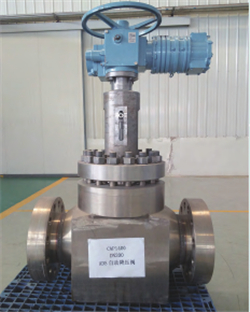
Figure 1 Automatic pressure reducing valves for the ADS system
⑵ Valves can be classified into vacuum valves, low-pressure valves, medium pressure valves, high-pressure valves, ultra high pressure valves and filters according to the main parameters like different pressure ranges. The valve can be divided into ultra low-temperature valves, normal temperature valves, medium temperature valves and high-temperature valves based on the different working temperature (Figure 2).
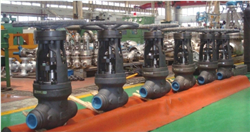
Figure 2 High-temperature and high-pressure self-pressure sealing globe valves
⑶ According to the driving mode, valves can be divided into automatic valves, power-driven valves (Figure 3) and manual valves.
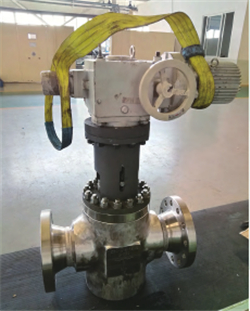
Figure 3 Nuclear second-stage electric three way globe valves
⑷ According to the nominal size, valves can be divided into valves of small diameters, valves of medium diameters, valves of large diameters (Figure 4), and valves of extra large diameters.
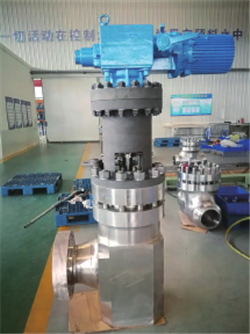
Figure 4 Nuclear first-stage large-diameter bellows stop check valves
⑸ According to structural characteristics, for example, the trajectory of the closing part moving in the valve seat, the valve can be divided plug types, swing types (Figure 5), butterfly types, orbit types and spherical types.
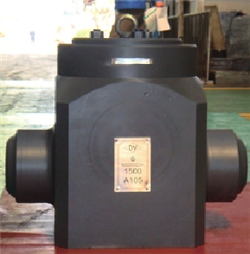
Figure 5 Self-pressure swing sealing check valves
⑹According to the connection method of the valve in the pipeline, the valve can be divided into threaded valves, flanged valves, welded valves, clamped valves, and wafer valves.
⑺ According to materials, valves can be divided into metal valves and non-metal valves.
The forging is adopted more for the main parts of the valve such as valve bodies, bonnets, plates, stuffing boxes, packing glands and valve stems. Quality requirements for valves especially used under special conditions are stricter, and the materials are becoming more and more complex, which not only brings opportunities but also a technical challenge to the forging industry.
The analysis of the market demand for forged steel valves
At present, the strengthening and upgrading of environmental protection in the domestic energy, chemical, pharmaceutical and other fields has accelerated the production of some valves with special needs. Now, most valves can be manufactured in China.
Nuclear power valves
Nuclear power valves were all imported in the past. Now, over 80% of them are manufactured in China, including the successful development of main steam isolation valves, safety valves, and quick-closing valves under special working conditions. Since 2014, the rate of valves made in China is high.
Hydrogenation device valves
They are mainly used in liquid hydrogen storage equipment. The valves are used under a low temperature of -196℃. Corrosion resistance, creep resistance, safety, no leakage, reliability and stability are the first requirements.
LNG valves
Recently, domestic gas is gradually being phased out and replaced with natural gas. In order to make transportation and storage more convenient, the gas is usually converted to liquid, and the valve operating condition is also low temperature.
Ultra-supercritical valves
Ultra-supercritical valves of the thermal power unit are used under high temperatures, and the working condition is also bad.

Figure 2 High-temperature and high-pressure self-pressure sealing globe valves
⑶ According to the driving mode, valves can be divided into automatic valves, power-driven valves (Figure 3) and manual valves.

Figure 3 Nuclear second-stage electric three way globe valves
⑷ According to the nominal size, valves can be divided into valves of small diameters, valves of medium diameters, valves of large diameters (Figure 4), and valves of extra large diameters.

Figure 4 Nuclear first-stage large-diameter bellows stop check valves
⑸ According to structural characteristics, for example, the trajectory of the closing part moving in the valve seat, the valve can be divided plug types, swing types (Figure 5), butterfly types, orbit types and spherical types.

Figure 5 Self-pressure swing sealing check valves
⑹According to the connection method of the valve in the pipeline, the valve can be divided into threaded valves, flanged valves, welded valves, clamped valves, and wafer valves.
⑺ According to materials, valves can be divided into metal valves and non-metal valves.
The forging is adopted more for the main parts of the valve such as valve bodies, bonnets, plates, stuffing boxes, packing glands and valve stems. Quality requirements for valves especially used under special conditions are stricter, and the materials are becoming more and more complex, which not only brings opportunities but also a technical challenge to the forging industry.
The analysis of the market demand for forged steel valves
At present, the strengthening and upgrading of environmental protection in the domestic energy, chemical, pharmaceutical and other fields has accelerated the production of some valves with special needs. Now, most valves can be manufactured in China.
Nuclear power valves
Nuclear power valves were all imported in the past. Now, over 80% of them are manufactured in China, including the successful development of main steam isolation valves, safety valves, and quick-closing valves under special working conditions. Since 2014, the rate of valves made in China is high.
Hydrogenation device valves
They are mainly used in liquid hydrogen storage equipment. The valves are used under a low temperature of -196℃. Corrosion resistance, creep resistance, safety, no leakage, reliability and stability are the first requirements.
LNG valves
Recently, domestic gas is gradually being phased out and replaced with natural gas. In order to make transportation and storage more convenient, the gas is usually converted to liquid, and the valve operating condition is also low temperature.
Ultra-supercritical valves
Ultra-supercritical valves of the thermal power unit are used under high temperatures, and the working condition is also bad.
Next: Domestic Development Status of Forged Steel Valves
Previous: The Structural Design of Forged Slab Gate Valves without Welding Seams
News
About Us
Best Categories
Useful Links